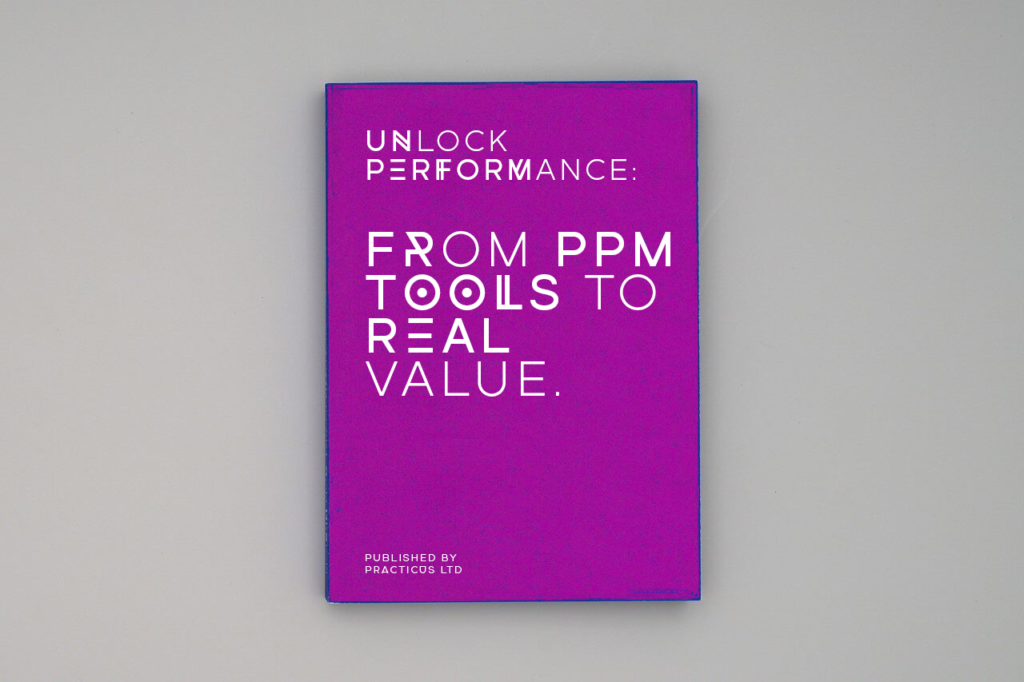PMO Roundtable: From PPM Tools to Real Value

A recent roundtable, organised and hosted by Practicus, brought together senior PMO and delivery professionals to share valuable insights on implementing, optimising, and sustaining Project Portfolio Management (PPM) tools and processes. The event saw discussions from attendees at well-known organisations including from Retail, Life Sciences, Automotive and Insurance, among others. The central theme was learning how to secure greater consistency, visibility, and value from PPM tools across different functions in large and complex businesses.
Below are the key themes and lessons drawn from the conversation:
Setting Clear Objectives and Understanding the “Why”
Without clarity of purpose, organisations risk duplicating effort and generating data that adds little or no value. Tools must be deployed to address specific objectives, such as financial tracking, investment prioritisation, or strategic alignment.
Soundbite: “People need to understand why they are entering data into the system. Otherwise they just see it as a chore…”
Key takeaway: Establish the goals of the PPM tool from the outset. This prevents the business from choosing technology that only partially meets its needs.
The Power of Change Management
The panellists emphasised that even organisations experienced in external transformation programmes sometimes struggle to standardise processes internally. Success hinges on bringing people with you and showing them real benefits from the new way of working.
Soundbite: “The change management piece is something I didn’t emphasise enough… I realised that even at my leadership team level, not everyone was fully on board.”
Key takeaway: Properly resource the change management effort. Demonstrate the tool’s value to end users, thereby ensuring accurate data entry and consistent adoption.
Phased vs Big Bang Rollouts
Businesses must decide whether to implement PPM tools in one sweeping motion or in stages. Organisations where teams are relatively self-contained can benefit from a ‘big bang’ go-live. Larger, more complex teams often succeed through a phased approach, beginning with high-level reporting, then building out advanced functionalities over time.
Soundbite: “We rolled out Big Bang within Supply Chain… but when we moved into Group Transformation, we went with a more phased approach.”
Key takeaway: Choose a rollout strategy that fits both the organisational culture and project scale. Striking the right balance between speed and minimising disruption is vital.
Aligning Processes and Avoiding Over-Customisation
A common pitfall is to mould the tool to every local preference. Contributors warned of spiralling costs and complexity when tweaking systems to the nth degree. Aligning on a core set of processes first, then making considered configurations (not heavy customisations) can keep things clean and sustainable.
Soundbite: “There’s a big difference between customisation and configuration. Customisation requires a lot more effort, testing, validation…”
Key takeaway: Start from standard processes, configure rather than customise, and address genuine needs rather than “nice-to-have” requests.
Top-Down Sponsorship and On-the-Ground Engagement
A common pitfall is to mould the tool to every local preference. Contributors warned of spiralling costs anInsights from Rolls-Royce and Vaillant illustrated how sustained senior sponsorship anchors consistent ways of working. At the same time, PMOs must empower project managers, teams, and operational staff so they feel genuine ownership.
Soundbite: “We found that we needed senior leaders at the reviews 50% of the time… That level of buy-in is critical.”
Key takeaway: Engage senior leaders to advocate for consistent usage, while also rewarding positive adoption at all levels.
Simplify Reporting to Focus on Value
Executives are time-poor and do not need reams of slides. Many participants described cutting down to concise dashboards, focusing on cost, resource utilisation, project health, and top-level time overruns. This ensures data remains accurate and elevates critical insights.
Soundbite: “We were creating a 100-page pack every week… Whether the IT director got past slide 7 or 8, we never bothered to ask!”
Key takeaway: Keep senior-level portfolio reporting succinct. Show only the essentials, with the ability to drill down for more detail when needed.
Continuous Improvement and Listening
Executives are time-poor and do not need reams of slides. Many participants described cutting down to concise dashboards, focusing on cost, resource utilisation, project health, and top-level time overruns. This ensures data remains accurate and elevates critical insights.
Soundbite: “We were creating a 100-page pack every week… Whether the IT director got past slide 7 or 8, we never bothered to ask!”
Key takeaway: Keep senior-level portfolio reporting succinct. Show only the essentials, with the ability to drill down for more detail when needed.
The Right Partner for Your PMO Journey
Finally, having an expert partner can determine whether a PPM rollout is smooth and value-driven. From scoping requirements through to embedding cultural change, practical support and leadership are essential.
Soundbite: “We engaged a third party partner… to really bring about additional awareness in terms of what the tool could offer.”
Key takeaway: A knowledgeable partner can help you define strategy, tailor processes, and manage change – ensuring your chosen technology genuinely enables transformation.
Beyond the Dashboard: PMOs that Deliver Real Value
From aligning on objectives and clarifying requirements to securing senior sponsorship and investing in robust change management, the roundtable participants highlighted that there is no one-size-fits-all solution to implementing PPM tools. Yet, the common theme is that building strong processes and a coherent adoption strategy is paramount, whichever software or platform is chosen.
More on PMO
ABOUT PRACTICUS
You can find out more about us on the about us page
